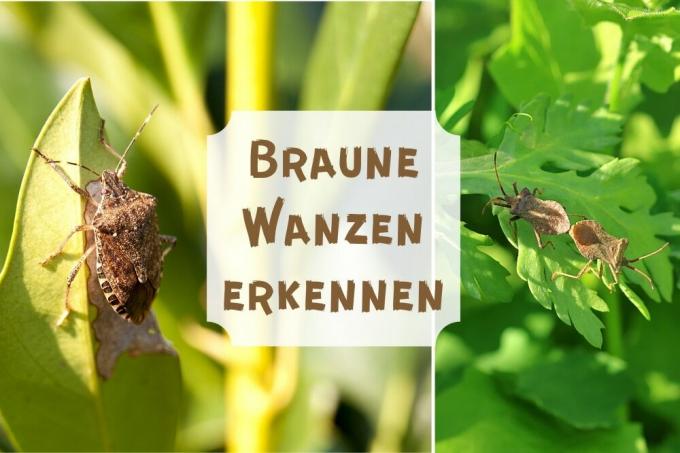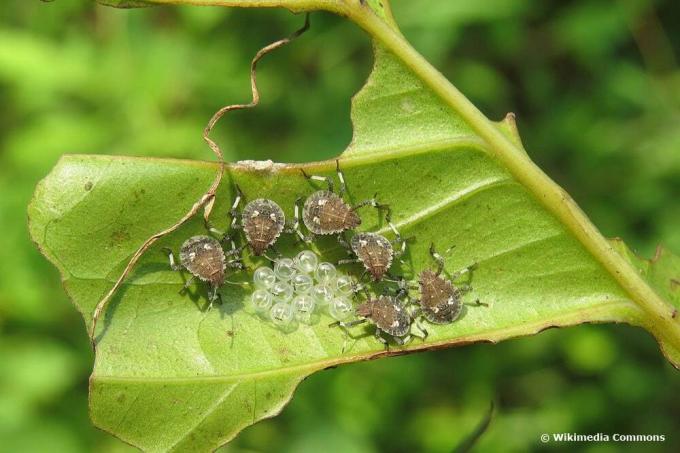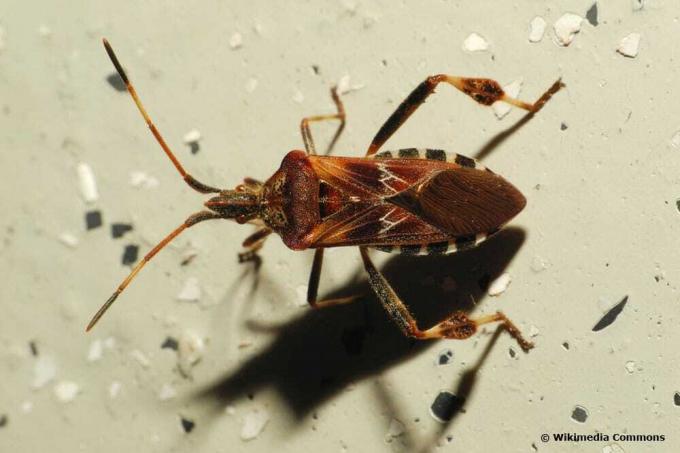
table of contents
- Stink bugs
- Field bugs
- Stink bugs
- Leather bug
- Cone bug
- Distinction
- Combat
- Frequently asked questions
If there are larger traces of feeding on beetles in the garden, they could be bedbugs. But how can they be recognized and which species are harmful?
In a nutshell
- It is difficult to differentiate between types of bugs based on their appearance
- Damage to plants provides information
- Fighting bed bugs is also possible with simple measures and means
- not all types of bugs are pests
Stink bugs
The term stink bug (Pentatomidae), like the stink bug, is a complete group of insects. The following features help to differentiate:

- can be yellowish, gray, brown or black but also marbled.
- Predatory stink bugs can be used wonderfully against pests
- difficult to distinguish for laypeople
Note: The stink bug also defends itself with a stinking secretion.
Field bugs
The field bug is also a stink bug. The Rhaphigaster nebulosa - as the insect is called in technical jargon - can also secrete a foul-smelling secretion and become unpleasant as a result. However, this stink bug beetle is not a pest either.

- the field bug can be a nuisance because it goes into houses to overwinter
- does no harm in human dwellings or in the garden
- grayish to brownish
Stink bugs
The stink bugs (Palomena prasina) usually do not cause any damage in the garden, but spread an extremely unpleasant odor when they feel threatened. The following features will help identify the brown bug:

- if this brown bug is touched, a pungent stench must be expected
- Odor lingers on skin and clothing for a long time
- usually gray to brown, green is also possible
Leather bug
The leather bug (Coreus marginatus) is a pest that is comparatively easy to identify. Characteristic are:

- Brown colour
- dark brown drawing on the edge
- slightly grooved surface of the armor reminiscent of leather
Cone bug
As the name of the cone bug (Leptoglossus occidentalis) already suggests, it “taps” into plants. This can cause considerable damage. It can be recognized by:

- significantly slimmer shape compared to other types of bedbugs
- dark, red-brown color
- bright spots
Distinction
The best way to spot bedbugs is to check the plants in the garden regularly. If the insects show the following signs at the same time, control should be carried out:
- brown dots
- Feeding marks
- Discoloration
- Deformations
Combat
It is possible to use commercial products such as neem oil or special mixtures and traps. Simply shaking off and collecting the bugs is also possible and very easy - but not possible in every area.
Spraying with soapy water, alcohol or other agents is possible in many ways, but in the long run it puts a strain on the plants and potentially existing beneficial organisms.
Frequently asked questions
It is completely sufficient to mix washing-up liquid or soft soap with lukewarm water and use this solution to spray the infected plants. However, it should be used several times a day so that it shows an effect against the brown bug.
Alcohol can be sprayed directly onto the crop. However, it is important to proceed with caution. Otherwise the plant can be damaged.
The oil can also be applied directly to the affected plants. The insects stop eating and reproducing. It is ideal to spray the oil on the leaves, diluted and mixed.



